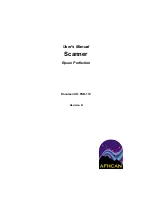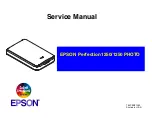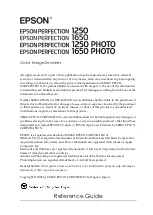
The length of time is really based on the type of oscillator installed in a unit, and what the typ
ical accuracy requirements are for the NTP clients. The longer it can run in Holdover mode
before it expires, the longer it can continue being a central time source for all of its clients. But
the longer NetClock runs in Holdover, the larger the offset to true UTC time will become,
because the undisciplined oscillator will drift over time:
The better the type of oscillator installed, the more stable it is while in Holdover and therefore,
the less its time will drift away from true UTC time. This results in more accurate timing, over
extended durations upon the loss of GPS input. For instance, a Rubidium oscillator will main
tain significantly better time over a longer Holdover duration than a TCXO oscillator (TCXOs
are considerably less stable than a Rb oscillator).
Holdover time drift (Oscillator error rates)
The chart below provides typical time drifts (estimated "error rates") for the oscillator types that
can be found in NetClock units. These numbers are based on the oscillator being locked to a
reference for two weeks, but then loses GPS reception for an extended period of time, while
the ambient temperature remains stable.
This data can help you determine how long of a Holdover period can be tolerated, based on
how much time drift may occur after GPS input is lost. The larger the time error that can be tol
erated by NetClock clients, based on the oscillator installed, the larger the Holdover timeout
period can be set to.
Table 3-3:
Estimated Holdover time drifts
(Nominal
drifts)
TCXO
OCXO
Low Phase Noise
OCXO
Rubidium
Low Phase Noise Rubid
ium
After 4 hours
12 µs
1µs
0.5 µs
0.2 µs
0.2 µs
After 24 hours
450 µs
25 µs
10 µs
1µs
1µs
After 7 days
3150 µs (3.1
ms)
175 µs
70 µs
7 µs
7 µs
After 30 days
13950 µs
775 µs
310 µs
31 µs
31 µs
To find out which type of oscillator is installed in your NetClock, navigate to
MANAGEMENT >
OTHER: Disciplining
, and look for the line item
Oscillator Type
in the
Status
panel.
Typical Holdover lengths
The length of the allowed Holdover Timeout period is displayed and configured in seconds.
The table below provides example conversions for typically desired Holdover periods.
Table 3-4:
Typical Holdover lengths in seconds
Desired Holdover Length Holdover Length (in seconds) to be entered
2 hours
7200 seconds (default value)
24 hours
86 400
212
CHAPTER
3
•
NetClock User Reference Guide
Rev.
16
3.4 Holdover Mode
Содержание NetClock 9400 Series
Страница 2: ......
Страница 4: ...Blank page II NetClock User Reference Guide...
Страница 16: ...BLANK PAGE XIV NetClock User Reference Guide TABLE OF CONTENTS...
Страница 42: ...BLANK PAGE 1 11 Regulatory Compliance 26 CHAPTER 1 NetClock User Reference Guide Rev 16...
Страница 160: ...BLANK PAGE 2 17 Configuring Outputs 144 CHAPTER 2 NetClock User Reference Guide Rev 16...
Страница 238: ...BLANK PAGE 3 5 Managing the Oscillator 222 CHAPTER 3 NetClock User Reference Guide Rev 16...
Страница 462: ...BLANK PAGE 446 NetClock User Reference Guide...
















































